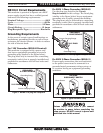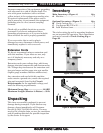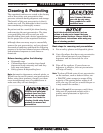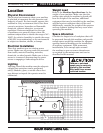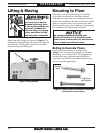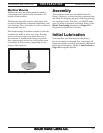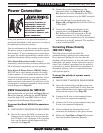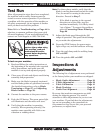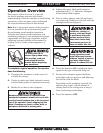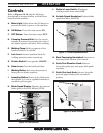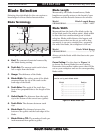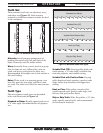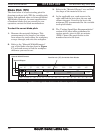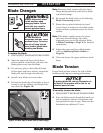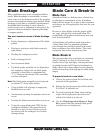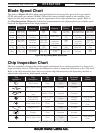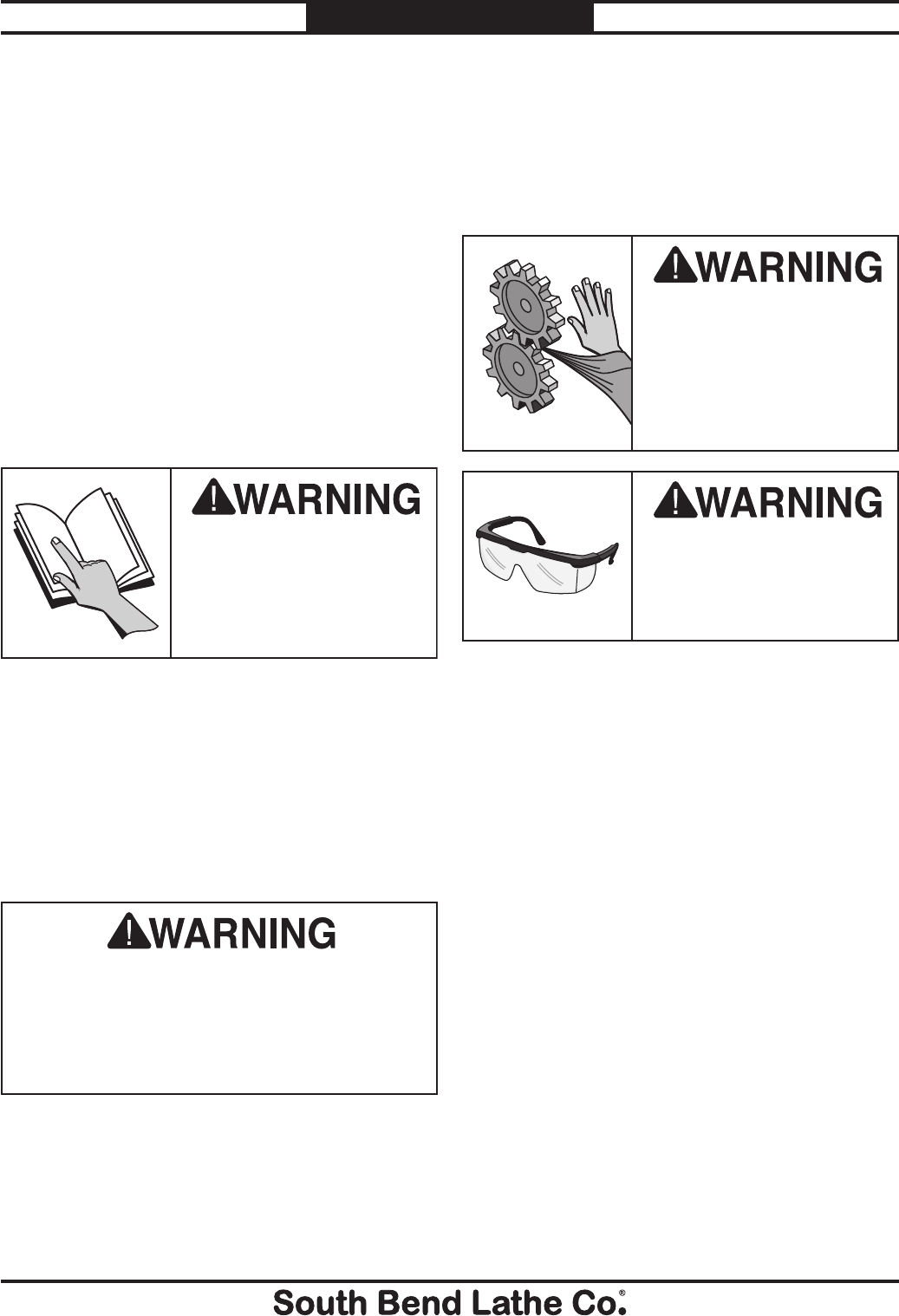
OPERATION
-22-
For Machines Mfg. Since 8/09
Model SB1040/SB1041
OPERATION
Operation Overview
To complete a typical operation, the operator
does the following:
1. Examines the workpiece to make sure it is
suitable for cutting.
2. Checks to make sure blade tension is correct,
and the blade guides are positioned correctly.
3. Marks the cut line on the workpiece.
4. Adjusts the upper blade guide height to
approximately
1
⁄8"–
1
⁄4" above the workpiece
for maximum blade support.
5. Puts on safety glasses, and rolls up sleeves
or secures any clothing or hair that could get
entangled with moving parts.
Loose hair, clothing, or
jewelry could get caught
in machinery and cause
serious personal injury.
Keep these items away
from moving parts at all
times to reduce this risk.
During operation, small
metal chips may become
airborne, leading to serious
eye injury. Wear safety
glasses to reduce this risk.
Workpieces that cannot be stabilized from
unexpected movement should not be cut with
a vertical metal bandsaw due to the increased
risk of the operator's hands slipping into the
blade. Examples are chains, cables, balls, or
workpieces with built-in moving parts.
6. Turns the bandsaw ON, and adjusts blade
speed for the type of material being cut.
7. Presses the workpiece against the blade,
using light and even pressure and following
the cut line with the blade.
Depending on the workpiece material, the
operator may squirt a small amount of
cutting fluid at the cutting area to keep it
from overheating and smoking.
8. Turns the bandsaw OFF.
To reduce the risk of
serious injury when using
this machine, read and
understand this entire
manual before beginning
any operations.
The purpose of this overview is to provide
the novice machine operator with a basic
understanding of how the machine is used durin
g
operation, so they can more easily understand
the controls discussed later in this manual.
Note: Due to the generic nature of this overview,
it is not intended to be an instructional guide
for performing actual machine operations.
To learn more about specific operations and
machining techniques, seek training from people
experienced with this type of machine, and do
additional research outside of this manual by
reading "how-to" books, trade magazines, or
websites.



